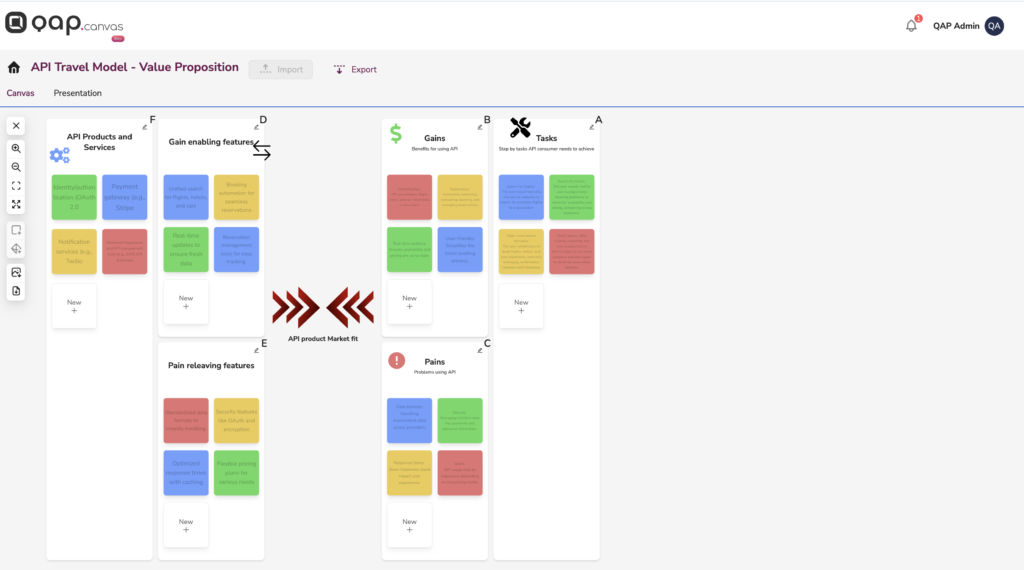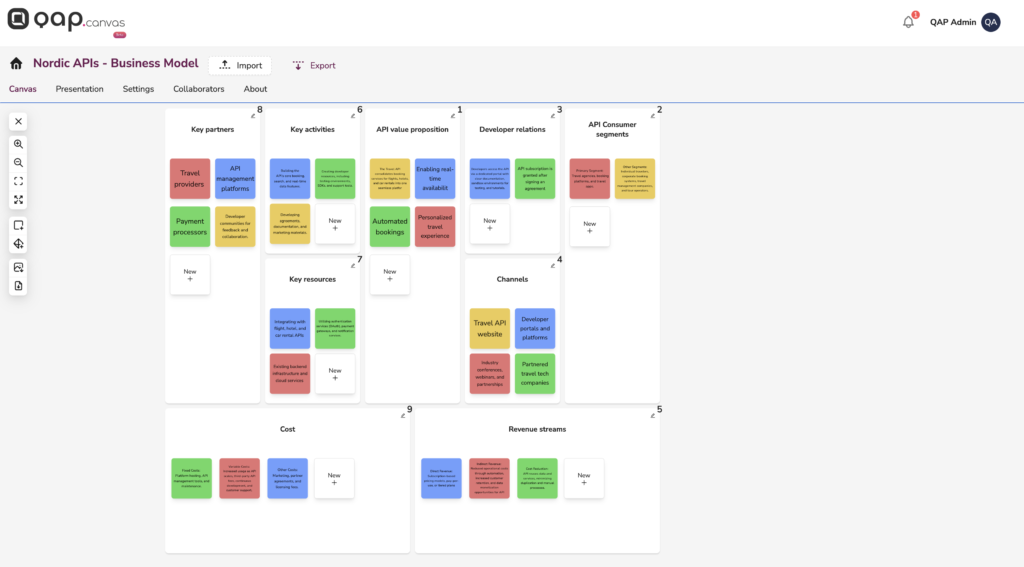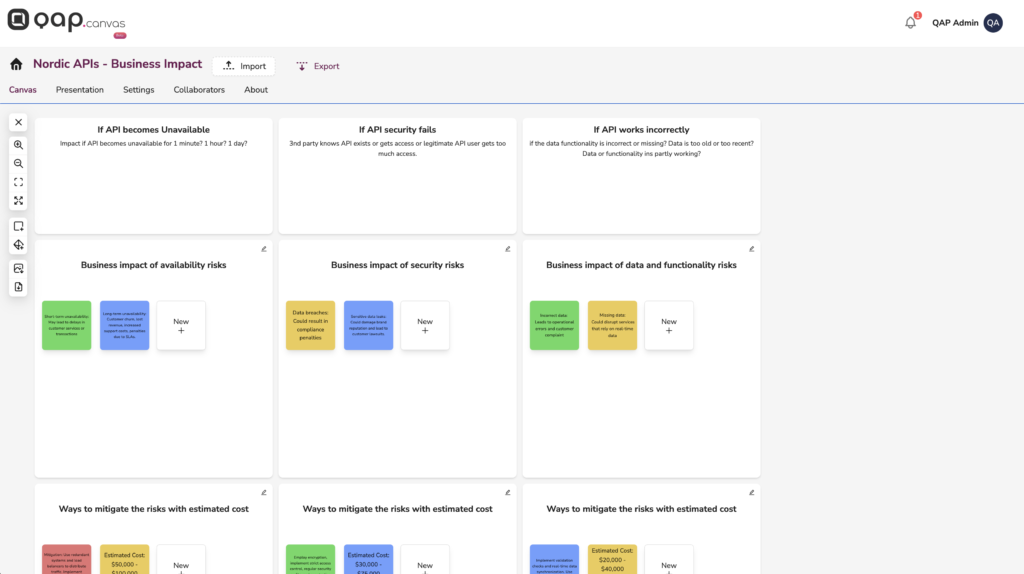Engage and Empower C-Levels, API Business Designers, API Product Managers and API Developers



With API Canvases, architects, solution owners, product managers, and business analysts can explore critical questions: Which APIs are yet to be developed? Which offer the highest potential value? Who are the end-users, and how do benefits weigh against costs?
While box diagrams or sequence charts may not resonate with everyone, they often fall short in capturing data and functional needs. Designing APIs directly from code is not only costly to modify but also limiting. A more effective approach involves leveraging data requirements and API design canvases. APIs should be crafted with external consumers in mind, prioritizing key aspects like data, data formats, documentation, and security.

For APIOpsCycles Methodology, please refer here: https://www.apiopscycles.com/
If you want to get trained on the methodology to go:
The use of multiple API gateways allows organizations to expand their service footprint, catering to diverse user needs while maintaining compliance and adaptability. This ensures APIs are accessible across regions, increasing overall availability and improving the user experience.
By deploying APIs across multiple gateways, organizations can balance the load, minimize bottlenecks, and handle traffic spikes efficiently. Horizontal scalability offers the flexibility to add gateways as demand grows, ensuring consistent performance and a smooth user experience, even under heavy loads.
Utilizing multiple gateways for API deployment allows organizations to adapt security policies and compliance protocols to specific regions or gateway needs. With granular control over access, authentication, and authorization, this strategy safeguards sensitive resources and simplifies compliance by customizing measures for each jurisdiction.
Using an API solution capable of deploying APIs across multiple gateways offers the advantage of avoiding vendor lock-in. Organizations can choose different gateway vendors based on their specific needs, leveraging each vendor’s unique features and capabilities. This freedom allows organizations to select the most suitable gateway for each use case, preventing reliance on a single vendor and fostering healthy competition.
Organizations can streamline their API lifecycle management processes with an API solution to deploy APIs in multiple gateways. This includes API versioning, deployment, monitoring, and analytics tasks. Organizations can reduce complexity, improve efficiency, and achieve better governance over their API ecosystem by centralizing these operations through a single solution.
Supporting multiple API gateways with a unified API solution provides a consistent developer experience across different platforms and gateways. Developers can leverage the same tools, frameworks, and documentation regardless of the underlying gateway infrastructure. This approach enhances developer productivity, encourages collaboration, and reduces the learning curve of working on various gateways.
In summary, deploying APIs in multiple API gateways using a comprehensive API solution offers organizations increased reach, improved performance, enhanced security and compliance, vendor diversity, simplified lifecycle management, and a better developer experience. By leveraging these benefits, organizations can unlock new business opportunities, cater to diverse user needs, and drive innovation in the API economy.



 7901 Kingspointe STE 10 – Orlando – Florida, FL 32819, USA
7901 Kingspointe STE 10 – Orlando – Florida, FL 32819, USA  Avenida Brigadeiro Faria Lima, 3200 – 3 Andar – Itaim Bibi, São Paulo-SP 04538-132, Brazil
Avenida Brigadeiro Faria Lima, 3200 – 3 Andar – Itaim Bibi, São Paulo-SP 04538-132, Brazil  Emirates Towers , Floor 42 – Dubai – United Arab Emirates
Emirates Towers , Floor 42 – Dubai – United Arab Emirates